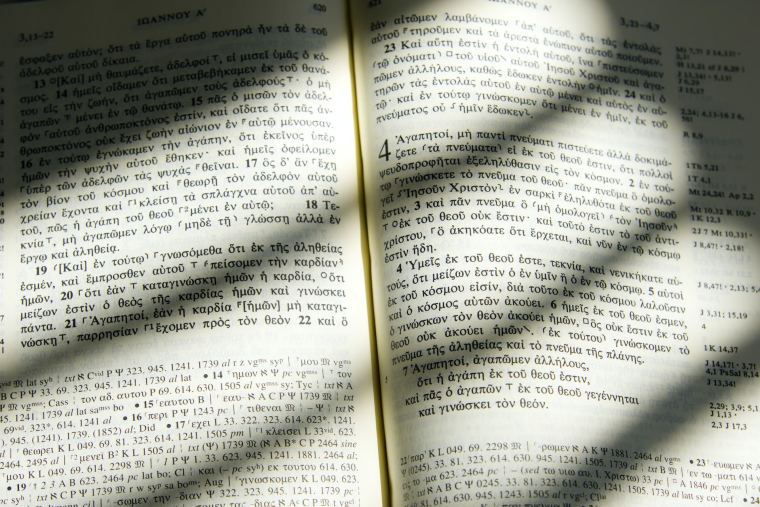
Introduction
One of my persistent challenges to the contemporary Church, at least in its Westernised forms, is its miniaturised perspective on Jesus. The Incarnation, life, death and resurrection of the Son of God, the one, who according to the most important of our Creeds, is “one being with the Father/of the same essence as the Father” (Gk: homoousios ὁμοούσιος), have been grossly downsized. This is very clear when it comes to our understanding of the Transfiguration. Whilst the whole Church once celebrated the Transfiguration annually, modern Christianity has neglected the revelation of Jesus Christ it contains. Facing his own upcoming death, Peter, in order to remind the faithful of his testimony, focuses his attention not on the many miracles of Jesus, nor on the dramatic and decisive Day of Pentecost, but on the Father’s testimony concerning Jesus at the Transfiguration. “For we did not follow cleverly devised myths when we made known to you the power and coming of our Lord Jesus Christ, but we were eyewitnesses of his majesty. 17 For when he received honour and glory from God the Father, and the voice was borne to him by the Majestic Glory, “This is my beloved Son, with whom I am well pleased,” 18 we ourselves heard this very voice borne from heaven, for we were with him on the holy mountain.” ((2 Peter chapter 1 verses 14, 16-18). Peter had this focus because the event was unforgettable for him.
Eternal
Jesus “was transfigured before them, and his clothes became radiant, intensely white, as no one on earth could bleach them….for they (Peter, James and John) were terrified.” (Mark chapter 9 verses 2-3, 6). To understand what “terrified” Christ’s closest companions, we must recall the biblical truth, “no man shall God and live.” (Exodus chapter 33 verse 20). Shortly before his transfiguration experience, he’d told his friends that he would come back “in the glory of his Father” (Mark chapter 8 verse 38), and that “some standing here who will not taste death until they see the kingdom of God after it has come with power.”” (Mark chapter 9 verse 1). The glory revealed in the Transfiguration is the Son’s power-filled oneness with the glory of God (cf. John chapter 17 verse 22). The holy awe they experienced at the Transfiguration must not be equated with the “awesome” language of contemporary Christians, it is the fear of the prophet in the temple (Isaiah chapter 6 verse 5) and the dread of the women at Jesus’ tomb, empty, except for an angel dazzling as Jesus did on the mount of Transfiguration (Mark chapter 16 verse 8). The cloud of glory that enveloped Peter, James, and John that day was a cloud of God’s eternal glory. This epiphany was needed to encourage Jesus in his frail mortal humanity to obey his Father, whatever the cost.
Suffer to Testify
Whilst Christ’s companions in the glory cloud, Moses, and Elijah, had failed to finish well their call to testify to God’s kingdom, as a beloved Jesus would place no limit on his suffering for his Father. This is the power behind his Gethsemane prayer, “Abba, Father, all things are possible for you. Remove this cup from me. Yet not what I will, but what you will.” (Mark chapter 14 verse 36), and the glory of Sonship which radiated from heaven at the Transfiguration. The measure of our personal revelation of who we are as sons of God (Romans chapter 8 verses 14-16; Galatians chapter 4 verses 4-6) is our perseverance in bearing testimony to Jesus, no matter what the cost. We must take inspiration from the fact that Jesus will accomplish his “exodus/departure” from Jerusalem (Luke chapter 9 verse 31) regardless of its cost. The radiance of the Transfiguration is the Father’s personal witness to this great fact.
Conclusion
Suffering is not the cost of glory, it is the way of glory. Whilst the resurrected Jesus said as much, “Was it not necessary that the Christ should suffer these things and enter into his glory?” (Luke chapter 24 verse 26), the Transfigurationwas visible proof from heaven that this is true. The Transfiguration is a revelation of the measure of glory that Christ will impart to us when he Returns, “at the end of the age….the righteous will shine like the sun in the kingdom of their Father.” (Matthew chapter 13 verses 40, 43). In seeing Jesus shining and transfigured the disciples should have understood that the distance between heaven and earth had been bridged in his own Person. However, their falling away at the cross indicates a failure of faith to see in his sufferings the hidden power of a transfigured life. Despite the gift of the Spirit and of the Holy Scriptures we show the same blindness. Let’s go against the flow of deprived Western Christianity by praying that the light of the eternally Transfigured Christ (Acts chapter 26 verse 13; Revelation chapters 1 verse 16, 21 verse 23 ) shine on us.

The Rev. Dr John Yates is an Anglican minister in Perth and has 5 children and 7 grandchildren. He spends time in praying, mentoring and writing.John Yates’s previous articles may be viewed athttp://www.pressserviceinternational.org/john-yates.html